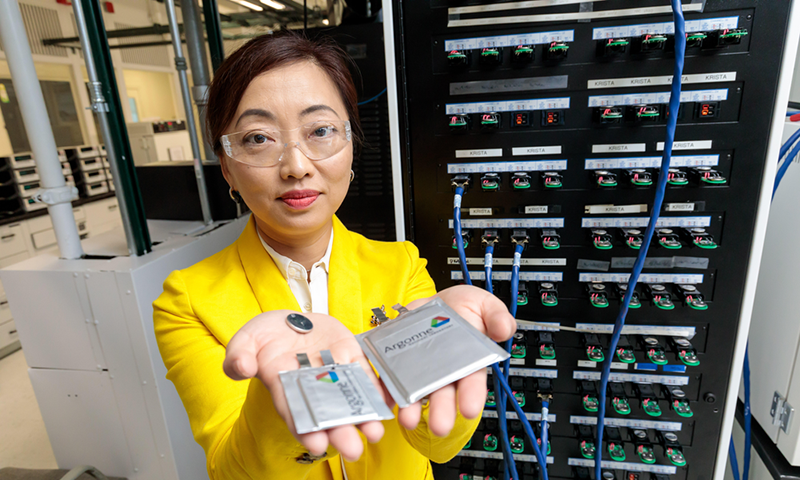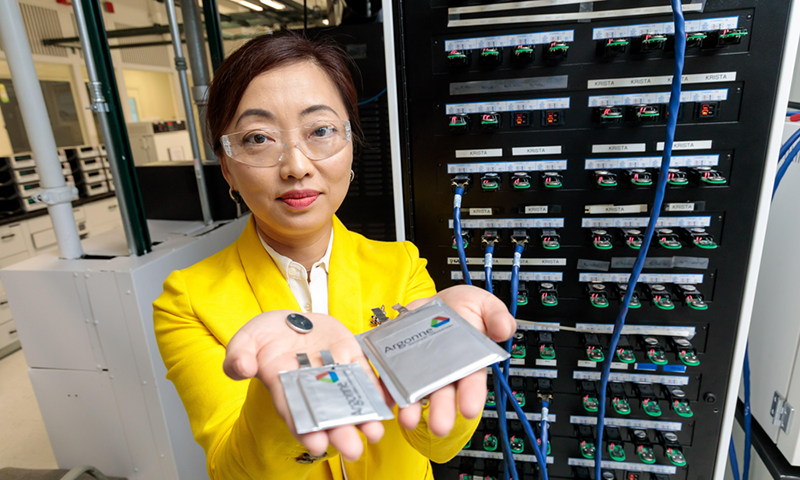The Path to Making Batteries Green
This article is part of a series of pieces on advances in sustainable battery technologies that Physics Magazine is publishing to celebrate Earth Week 2024. See also: Q&A: Electrochemists Wanted for Vocational Degrees; Research News: Lithium-Ion “Traffic Jam” Behind Reduced Battery Performance; News Feature: Sodium as a Green Substitute for Lithium in Batteries; Research News: A New Cathode for Rechargeable Magnesium Batteries.
When it comes to batteries, “green” is all the rage. To get green credentials, a battery must contain only materials obtained using sustainable methods. The manufacturing processes used to make the battery should also have minimal environmental impacts and the device should be fully recyclable. Scientists are making advances in all these areas, but obstacles remain. So, when will green batteries become the norm? To find out, Physics Magazine spoke with Shirley Meng, a molecular engineer at the University of Chicago who works on materials discovery for green batteries. Meng is also the chief scientist at the Argonne Collaborative Center for Energy Storage Science, Illinois, where scientists and engineers from different fields work together to solve modern energy-storage problems.
When it comes to batteries, what does green mean to you?
A green battery is first a battery that stores “green” electrons, those generated by renewable sources such as wind or solar. But a battery itself is not renewable. Batteries contain minerals that are mined from Earth’s crust, which, like fossil fuels, are not naturally replenished. For a battery to be green, the other factors in its lifecycle, therefore, need to be sustainable. Those factors include not only how the minerals are mined but also the mine locations relative to manufacturing plants or end users—the closer mines and factories are to one another, for example, the less energy goes into transportation of raw materials.
We must also think about what happens to the battery when it no longer works. To be sustainable the minerals in a battery should be 100% recyclable, and industries should be able to turn materials from an old battery into a new one an infinite number of times. Only with this circularity can we have a truly green battery that helps us transition away from fossil fuels to more sustainable energy sources.
That’s a lot of factors. Is there one that is proving harder to achieve than the others?
The biggest obstacle in making a green battery isn’t technological. It’s changing the mindsets of companies and consumers who until now have largely treated batteries as disposable commodities that they just throw into the dustbin after they’re done using them.
Companies and laboratories are actively developing battery-recycling technologies, but they are still nascent—the techniques might work for a few tens of kilograms of materials, but to be commercially viable, they need to work for hundreds of tons of material. Achieving that goal is key, yet it won’t matter if no one recycles their batteries—we can see that for plastics. So, for me, it’s changing this mindset that is the big challenge.
Any ideas on how to get everyone on board with recycling?
It won’t be easy—just as it isn’t for plastics. But we can’t just live in the mess.
I would love for companies to have more responsibility on that front and to lead by example. They currently have an economic incentive to recycle in that the cost of battery materials is so high. But if the cost of making batteries goes down, that incentive for companies could disappear. That is where we, as consumers, have power.
We need to push battery companies to report how much carbon dioxide was emitted during a battery’s fabrication, what mining practices were used, where the materials were sourced from, and how long the battery will last, for example. And then we need to buy only those devices containing batteries that are sustainable, long-lasting, and recyclable.
How do these issues play into your own research projects on developing new battery technologies?
I try to keep the big picture in mind, even though I am only focused on a small part of the problem.
My personal passion is finding an alternative to lithium, which is used in all sorts of batteries that power everything from wireless headphones to electric vehicles. Most of Earth’s lithium is concentrated in Chile and Australia and then gets shipped to China for refining and manufacturing. Using sodium instead of lithium could allow countries to source minerals locally, which would substantially reduce transportation energy costs. So that is a material we work with a lot in my lab.
We also study other battery-design changes, such as replacing the commonly used liquid electrolyte with a solid material. Solid-state batteries would potentially be denser, safer, and longer lasting than current batteries.
When do you think the world will see its first truly green battery?
Soon. There are still challenges to overcome, but I believe that all the promised scientific advances in batteries will be achieved in the near future. The bigger barrier is the trend of companies and countries to consider green batteries as a zero-sum game. Everyone needs to work together to create local ecosystems for generating and storing renewable energy. That is the only way we can transit to a new energy regime.
–Katherine Wright
Katherine Wright is the Deputy Editor of Physics Magazine.





